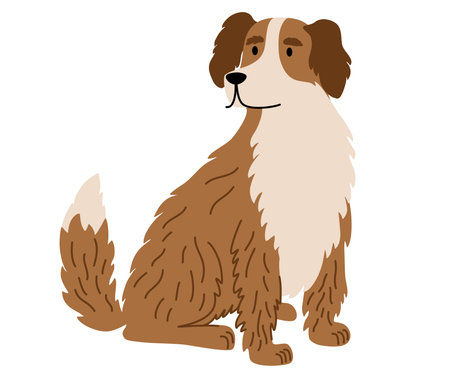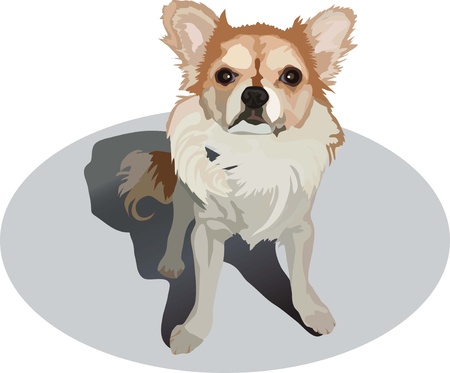Understanding Pet Food Recalls
Pet food recalls are an important safety mechanism in the United States, designed to protect both pets and their owners from potential harm. A recall is typically triggered when there is evidence or suspicion that a pet food product may be unsafe due to contamination, mislabeling, or other regulatory violations. The U.S. Food and Drug Administration (FDA) oversees the recall process, working closely with manufacturers to ensure affected products are removed from store shelves as quickly as possible. Common causes for pet food recalls include bacterial contamination such as Salmonella or Listeria, the presence of foreign objects like metal or plastic, inaccurate ingredient labeling, and potentially harmful levels of nutrients or chemicals. Understanding how recalls work and what prompts them can help pet owners make informed decisions and respond quickly if their pet’s food is ever impacted.
2. How to Stay Updated on Recalls
Keeping up with pet food recalls is essential for your pet’s health and safety. In the U.S., there are several trustworthy sources you can rely on to get real-time information about recalls. Knowing where to look and how to sign up for alerts can help you act quickly if your pet’s food is affected.
Reliable Sources for Recall Information
The following table lists key resources and what they offer when it comes to staying updated on pet food recalls:
| Source | Description | How to Access |
|---|---|---|
| FDA (U.S. Food & Drug Administration) | Official government agency providing recall announcements, safety alerts, and detailed investigation reports. | FDA Animal & Veterinary Recalls Page, or sign up for email alerts. |
| USDA (United States Department of Agriculture) | Handles recalls related to animal products under its jurisdiction, including some pet foods. | USDA Recalls Page |
| AVMA (American Veterinary Medical Association) | Shares recall notices and educational resources for pet owners through their website and newsletters. | AVMA Pet Food Recalls |
| Online Databases (e.g., Petful, Dog Food Advisor) | Non-governmental sites that track recalls, often offering searchable databases and immediate alerts. | Visit websites or subscribe to email/text notifications for instant updates. |
| Pet Community Alerts (Social Media & Forums) | Paws-on-the-ground updates from other pet owners, veterinarians, and advocacy groups via Facebook groups, Reddit threads, and dedicated forums. | Join trusted communities online; set notification preferences for recall discussions. |
Email & Mobile Alerts: Never Miss an Update
Many of the resources listed above offer free email or text message alerts. Signing up ensures you’ll receive timely notifications tailored to your needs. For example, the FDA allows users to customize alert preferences by product type or region, making it easy for American pet owners to get relevant info fast.
Why Multiple Sources Matter
No single source catches every recall immediately. Combining official government channels with community-driven platforms helps you stay ahead of potential risks. If you hear about a recall in a Facebook group or forum, always cross-check with an official database like the FDA for verification before taking action.

3. Recognizing Recall Announcements
When it comes to keeping your furry friend safe, being able to quickly spot and understand pet food recall announcements is crucial. Here are some practical tips for identifying official recall notices and how to interpret the information they provide.
Tips for Quickly Identifying Official Recall Notices
Check Trusted Sources First
Official recalls are typically announced by reputable sources such as the U.S. Food and Drug Administration (FDA), the American Veterinary Medical Association (AVMA), or directly from the manufacturer’s website. Be cautious of news shared on social media unless it links back to these official channels.
Look for Key Details in Announcements
Authentic recall notices will include specific details such as the product name, brand, lot number, expiration date, UPC codes, and a description of the issue prompting the recall (like contamination or mislabeling). If this information is missing or vague, double-check with trusted sources before taking action.
How to Read and Interpret Recall Information
Understand What’s at Risk
A recall notice will usually specify whether it’s a voluntary or mandatory recall, what type of hazard is present (e.g., salmonella, foreign objects, nutrient imbalance), and which pets may be affected. Pay attention to whether the risk affects all animals or only certain breeds, ages, or health conditions.
Follow the Instructions Provided
Recall announcements will guide you on what steps to take next—whether you should stop feeding the product immediately, return it to the store for a refund, or contact your veterinarian if your pet has consumed the recalled food. Always follow these instructions carefully for your pet’s safety.
Stay Alert for Updates
Sometimes recalls expand as more information becomes available. Sign up for email alerts from trusted agencies and manufacturers so you’re always up-to-date on any new developments affecting your pet’s food supply.
4. Immediate Actions to Take if Your Pets Food is Recalled
If you discover that your pet’s food has been recalled, it’s important to act quickly and responsibly to keep your furry friend safe. Here’s a step-by-step guide on what to do, how to handle refunds or replacements, and ways to protect your pet’s health.
Step-by-Step Guidance for Handling Recalled Pet Food
| Step | Action | Details |
|---|---|---|
| 1 | Stop Feeding Immediately | Discontinue feeding the recalled product to your pet right away. Check all packages in your home to make sure none are affected. |
| 2 | Check Recall Details | Review the recall notice for specific lot numbers, expiration dates, and UPC codes. This helps confirm if your product is included in the recall. |
| 3 | Isolate the Product | Store the recalled food out of reach of pets and children, preferably in a sealed bag or container, until you know how to dispose of it properly. |
| 4 | Contact the Manufacturer or Retailer | Reach out for instructions on refunds or replacements. Most companies will require proof of purchase and product details. |
| 5 | Dispose of Safely | If advised to discard, follow local guidelines for disposal. Do not donate or give away recalled food. |
| 6 | Monitor Your Pets Health | Watch for symptoms like vomiting, diarrhea, lethargy, or loss of appetite. If any signs appear, contact your veterinarian immediately. |
| 7 | Report Any Issues | If your pet becomes ill after consuming recalled food, report it to both the manufacturer and the FDA using their online reporting portal. |
Refunds and Replacements: What You Need to Know
Most reputable pet food brands offer a refund or replacement for recalled products. Keep your packaging and receipt handy as proof of purchase. Visit the brand’s website or call their customer service line for exact procedures—they may mail you a check, send a coupon for replacement, or arrange a return through the retailer where you bought the product.
Your Pet’s Health Comes First
If your pet has already eaten some of the recalled food, stay alert for any unusual behavior or health symptoms. Write down what was consumed and when. Even if your pet seems fine, consider calling your vet for advice—early intervention can be crucial if there are potential contaminants involved.
Key Takeaways:
- Act promptly—stop using recalled food immediately.
- Document everything—lot numbers, receipts, symptoms.
- Your veterinarian is your best resource if you have health concerns about your pet.
- Stay informed—sign up for recall alerts from reliable sources like the FDA or pet food manufacturers.
Taking swift action during a recall not only protects your pet but also helps prevent other pets from being harmed by unsafe products. Always prioritize safety and don’t hesitate to ask questions if you’re unsure about next steps.
5. Prevention: Choosing Safe Pet Foods
One of the most effective ways to protect your furry family members from pet food recalls is by being proactive in choosing safe, high-quality products. Here’s how you can evaluate pet food brands for safety, quality, and transparency to help prevent problems before they arise.
Check for Brand Transparency
Start by researching how open a brand is about its sourcing, manufacturing, and quality control processes. Trustworthy companies are transparent about where their ingredients come from, who manufactures their food, and what steps they take to ensure safety. Look for brands that provide detailed information on their websites and customer service lines that answer your questions honestly and thoroughly.
Evaluate Ingredient Quality
High-quality pet foods list real meat, fish, or poultry as the primary ingredient and avoid fillers like corn, soy, or animal by-products. Read labels carefully—shorter ingredient lists with recognizable items are usually better. Additionally, look for foods that meet AAFCO (Association of American Feed Control Officials) nutritional standards, which indicate a balanced diet for your pet.
Investigate Recall History
Before committing to a brand, check its recall history online. Brands with frequent recalls or poor responses to past issues may not prioritize safety or quality. The FDA and independent organizations like the American Veterinary Medical Association (AVMA) maintain up-to-date recall databases you can search easily.
Look for Third-Party Testing
Some reputable pet food companies use third-party laboratories to test their products for contaminants like salmonella or heavy metals. This extra layer of oversight helps ensure higher safety standards and provides peace of mind for pet owners.
Consider Responsiveness and Communication
A brand’s willingness to engage with customers and address concerns is another sign of reliability. Strong customer service teams, easy access to product information, and swift communication during recall events show that a company takes your pet’s health seriously.
By taking these steps when selecting pet food brands, you can greatly reduce your pet’s risk of exposure to unsafe products—and stay ahead of potential recalls before they become an issue.
6. What to Do if Your Pet Shows Signs of Illness
If you suspect your pet has eaten recalled food or is showing unusual symptoms, taking quick action can make all the difference.
Recognize the Warning Signs
Common symptoms of pet food-related illness include vomiting, diarrhea, lethargy, loss of appetite, excessive drooling, or sudden changes in behavior. In more serious cases, you might notice tremors, difficulty breathing, or seizures. Always trust your instincts—if your pet seems “off,” it’s better to be cautious.
When to Contact Your Vet
If you observe any of these symptoms after feeding your pet a potentially recalled product, call your veterinarian right away. Be ready to provide details about the food—brand, lot number, and expiration date—as well as when the symptoms started and what exactly you’ve noticed. If possible, bring the pet food packaging with you to your vet visit.
How to Report Pet Food-Related Illnesses
Reporting suspected illnesses helps protect other pets and keeps manufacturers accountable. You can file a complaint with the FDA’s Safety Reporting Portal or contact your state’s Department of Agriculture. Include as much information as possible: the product name, purchase location, lot number, best-by date, and a description of your pet’s symptoms and treatment.
Keep Records for Future Reference
Documenting everything—including photos of the packaging and receipts—can help both your veterinarian and regulatory agencies investigate and take appropriate action. Staying vigilant not only protects your own furry family member but also helps ensure the safety of pets nationwide.

